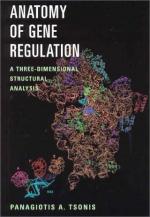|
This section contains 340 words (approx. 2 pages at 300 words per page) |
A structural gene is a gene whose product is an enzyme, or a protein that is involved in structural functions (i.e., tRNA, rRNA, etc.). It is a concept relative to regulatory genes. A regulatory genes' function is to regulate the expression of other genes through its own gene product such as RNAs or proteins. The overwhelming majority of bacterial genes are structural genes. In bacteria, a series of structural genes that are often, but not necessarily related in function, tend to cluster. These genes may encode enzymes in certain metabolic pathways. They use a common promoter and transcribe as a single transcription unit and hence, are coordinately regulated. The regulator gene generally has its own promoter, and may be expressed constitutively or may be subject to autogenous regulation. The expression of structural genes is under two modes of control. The structural genes are said to be under negative control if they are expressed until turned off by the regulator protein, and under positive control if they are not expressed until turned on by the regulator protein. The entire system, including the structural genes and other elements that control their expression forms an operon.
In a positively controlled operon, the regulatory gene encodes a protein called an activator that binds to a region of the operon (the initiator), thereby turning on the transcription initiation. In a negatively controlled operon, the regulatory gene encodes a protein called repressor protein that binds to a specific region of the DNA (the operator) upstream of the structural genes, thereby preventing the initiation of transcription. The classic mode of control in bacteria is negative. In eukaryotes, one structural gene transcribes as a single unit. The regulation of the structural gene transcription is much more complicated in eucaryotes. It involves a large number of factors that bind to variety of cis-acting elements. Termination of the transcript happens far beyond the end of the coding sequence. The common mode of eucaryotic transcription is positive. Regulation by specific repression of a promoter is rare.
|
This section contains 340 words (approx. 2 pages at 300 words per page) |


